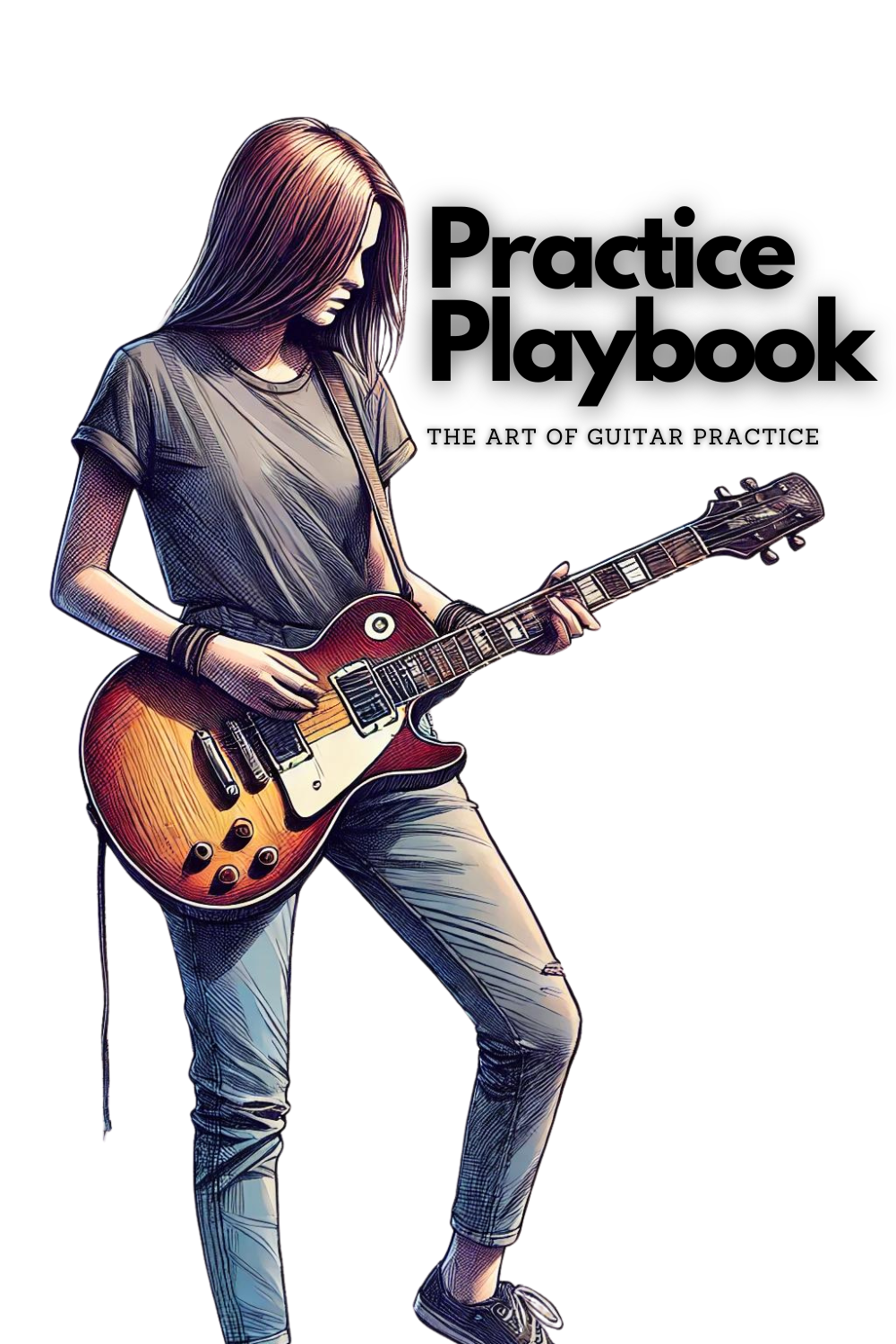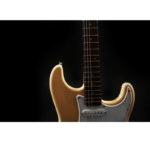Chord progressions are the foundation of almost every song you’ll play on the guitar, making them essential for rhythm guitarists and solo players alike. Understanding common guitar chord progressions will not only enhance your ability to play songs in different styles, but it will also improve your ability to compose your own music.
In this blog post, we’ll dive deep into what chord progressions are, explore some of the most common progressions, and offer tips on how to practice them effectively. We’ll also talk about rhythm guitar techniques that will make your playing more dynamic and musical. Whether you’re just starting out or looking to improve your rhythm skills, this guide will give you the tools you need to take your playing to the next level.
What Are Guitar Chord Progressions?
A chord progression is a sequence of chords that work together to form the harmonic structure of a song. In most cases, chord progressions repeat in cycles, forming the backbone of a piece of music. Guitar players often use these progressions to play rhythm parts, accompanying singers, lead guitarists, or other instruments.
Chord progressions are labeled based on the scale degrees of the key in which they are played. For example, in the key of C major, the I chord is C, the IV chord is F, and the V chord is G. These progressions can be found in countless songs across genres like rock, pop, blues, and country.

Download the the Practice Playbook!
Practice Playbook is a powerful guide designed to take your guitar practice sessions to the next level. Whether you’re just starting out or looking to sharpen your skills, this playbook gives you everything you need to practice smarter, not harder. With 20 unique guitar practice prompts, 10 highly effective practice methods, and 10 expertly designed practice routines, you’ll have a structured path to real progress.
Download Now
Common Guitar Chord Progressions You Should Know
Let’s explore some of the most common guitar chord progressions used in popular music. These progressions are widely used across multiple genres and are essential for any guitarist to master. You should check out the chord wheel to help learn chord progressions.
1. I-IV-V Progression (The Classic)
One of the most famous and widely used chord progressions is the I-IV-V progression. It forms the basis of many rock, pop, and blues songs. The I-IV-V progression uses the first, fourth, and fifth chords from a given key.
Example in the Key of G:
- G (I)
- C (IV)
- D (V)
This progression is often used in 12-bar blues, rock classics, and country tunes. In the key of G, you could strum G major for four beats, switch to C major for four beats, then to D major for four beats, and back to G to complete the cycle.
How to Practice the I-IV-V Progression:
- Focus on Timing: Start with a slow tempo and focus on clean chord changes. Use a metronome to help you stay on time.
- Strumming Patterns: Experiment with different strumming patterns to bring variety to your playing. For example, try downstrokes on the beat for a steady rhythm or mix in upstrokes for a more dynamic sound.
- Chord Transitions: Practice transitioning between chords without pausing. Start slow and build up speed as you become more comfortable.
2. ii-V-I Progression (Jazz Favorite)
The ii-V-I progression is a staple in jazz and is also common in pop and rock ballads. This progression moves from the second chord (ii) to the fifth chord (V), and then resolves on the first chord (I). It has a smooth, flowing sound that’s perfect for slow or mid-tempo songs.
Example in the Key of C:
- Dm (ii)
- G (V)
- C (I)
In the key of C, this progression creates a natural resolution, moving from the minor ii chord to the major V and resolving on the tonic (C major). It’s a more sophisticated progression that adds color and depth to any piece.
How to Practice the ii-V-I Progression:
- Chord Voicings: Since the ii-V-I progression is common in jazz, experiment with different chord voicings. Try playing the basic open position chords first, then explore barre chords or more advanced jazz shapes like 7th or 9th chords.
- Practice Smooth Transitions: Work on transitioning smoothly between minor and major chords. This can be tricky at first but is crucial for mastering this progression.
- Experiment with Rhythm: In jazz, it’s common to play these chords using syncopated rhythms or swing patterns. Try varying the rhythm of your strumming to give your playing more character.
3. I-V-vi-IV Progression (The Pop Anthem)
The I-V-vi-IV progression is the go-to progression for many modern pop songs. It’s versatile, easy to play, and evokes a wide range of emotions. Many famous songs across different genres have used this progression, making it one of the most recognizable progressions in music.
Example in the Key of D:
- D (I)
- A (V)
- Bm (vi)
- G (IV)
This progression often starts with a strong major chord (D), moves to the fifth chord (A), drops to the relative minor (Bm), and finishes on the IV chord (G). The progression is both uplifting and emotional, making it perfect for pop and rock ballads.
How to Practice the I-V-vi-IV Progression:
- Use a Capo: If you want to play along with pop songs but they’re in a different key, use a capo to adjust the key without changing the chord shapes. This will expand the number of songs you can play.
- Add Fingerpicking: Once you’re comfortable with the progression, try fingerpicking instead of strumming. This adds texture and variation to your rhythm guitar playing.
- Experiment with Inversions: Use chord inversions (rearranged chord shapes) to create smoother transitions between chords. This will make your progressions sound more polished.
4. vi-IV-I-V Progression (The Emotional Rollercoaster)
Another common progression is the vi-IV-I-V progression, often referred to as the “Axis of Awesome” progression due to its use in so many hit songs. This progression has an emotional feel, often starting with a minor chord before resolving on the major I chord.
Example in the Key of A:
- F#m (vi)
- D (IV)
- A (I)
- E (V)
In this progression, starting on the minor vi chord gives the music a more introspective or melancholic tone, but it brightens as it moves to the major I and V chords.
How to Practice the vi-IV-I-V Progression:
- Focus on Dynamics: This progression is great for practicing dynamics, or the loudness and softness of your playing. Start softly and gradually build up the intensity as you move through the chords.
- Add Palm Muting: For a more rhythmic approach, practice palm muting while strumming. This technique gives the progression a tighter, more percussive feel.
- Experiment with Different Keys: This progression works well in multiple keys. Try playing it in different positions on the neck to get comfortable with various chord shapes and keys.
Rhythm Guitar Techniques
Rhythm guitar is all about holding down the foundation of a song by playing chord progressions in time with the rest of the band. But it’s not just about strumming chords—there’s a lot more you can do to enhance your rhythm guitar playing. Here are some techniques to help you make your playing more dynamic and musical.
1. Strumming Patterns
One of the most important aspects of rhythm guitar is developing a variety of strumming patterns. The way you strum can completely change the feel of a song, so experiment with different patterns to keep your playing fresh.
Example Patterns:
- Basic Downstrokes: For a simple, driving feel, use only downstrokes on each beat. This works well for fast rock songs.
- Down-Up Strumming: A more typical strumming pattern involves alternating between down and upstrokes (down-up-down-up). This is useful for slower, more relaxed songs.
2. Palm Muting
Palm muting is a technique where you lightly rest the palm of your strumming hand on the strings near the bridge to create a muted, percussive sound. This technique is often used in rock and punk music to add rhythm and drive to chord progressions.
How to Practice Palm Muting:
- Start by practicing on the I-IV-V progression in the key of G. As you strum, rest your palm on the strings near the bridge, applying enough pressure to mute the sound without fully stopping the strings from vibrating.
- Gradually build up the speed and intensity of your strumming to create a tight, punchy rhythm.
3. Accents and Syncopation
Another way to add variety to your rhythm playing is by using accents and syncopation. Accenting certain beats or playing off-beat rhythms adds complexity and depth to your progressions.
Example: Try accenting the 2nd and 4th beats of each measure when playing a progression like the I-V-vi-IV. This gives your playing a syncopated, dance-like feel, which is perfect for pop and funk genres.
4. Arpeggios
Instead of strumming chords, you can play arpeggios, where you pick each note of the chord individually. This adds a melodic quality to your rhythm playing and works particularly well for slower ballads or intros.
How to Practice Arpeggios:
- Choose a chord progression, like the I-V-vi-IV, and instead of strumming, pick the notes of each chord one by one. Focus on making the notes ring out clearly, with an even rhythm.
- You can use arpeggios in place of strumming for certain sections of a song to add contrast.
How to Practice Guitar Chord Progressions
Practicing common guitar chord progressions effectively is key to mastering rhythm guitar. Here are some tips on how to practice these progressions and improve your overall playing:
1. Use a Metronome
One of the most important tools for practicing rhythm guitar is a metronome. A metronome helps you develop your sense of timing by keeping a steady beat. When practicing chord progressions, start slow and gradually increase the tempo as you get more comfortable.
Practice Tip: Begin by setting the metronome to 60 beats per minute (BPM) and play through a progression like I-IV-V. Once you can play smoothly at that tempo, increase the speed by 10 BPM increments.
2. Break It Down
If you find certain chord transitions challenging, break the progression down into smaller pieces. Focus on transitioning between two chords at a time before trying to play the entire progression.
Example: If you’re struggling with the transition between G and D in a I-IV-V progression, practice moving between just those two chords until you can do it smoothly. Once you’re confident, add the next chord in the sequence.
3. Practice with Backing Tracks
Playing along with backing tracks is a great way to simulate a real musical context and improve your sense of timing and groove. You can find backing tracks for many different chord progressions in a variety of styles online, or you can create your own.
Practice Tip: Play along with a blues backing track in the key of G to practice the I-IV-V progression. Focus on staying in time and locking into the groove of the track.
4. Use Alternate Strumming Patterns
Once you’ve mastered the basic strumming patterns, try experimenting with alternate strumming techniques. Changing up your strumming patterns can add dynamics and rhythm variations to your playing, making even simple chord progressions sound more interesting.
Example: For a song using the I-V-vi-IV progression, start with a steady down-up strumming pattern. Then, switch to a syncopated pattern where you accent different beats for added complexity.
5. Record Yourself
Recording yourself while practicing is one of the best ways to identify areas that need improvement. Listening back to your playing will help you spot timing issues, uneven strumming, or inconsistent transitions.
Practice Tip: Record yourself playing through a common chord progression, such as vi-IV-I-V. Listen back to see if your transitions are smooth, your rhythm is consistent, and the chords are ringing out clearly.
6. Apply Progressions to Real Songs
One of the most rewarding ways to practice common chord progressions is by applying them to real songs. Many popular songs are built around simple progressions, so playing along with your favorite tracks can help you get used to using these progressions in a musical context.
Example: Songs like “Let It Be” by The Beatles or “With or Without You” by U2 use the I-V-vi-IV progression. Play along with these songs to practice your rhythm guitar skills in a real-world context.
Conclusion: Mastering Common Guitar Chord Progressions
Mastering common guitar chord progressions is an essential step in becoming a well-rounded guitarist. Whether you’re practicing the iconic I-IV-V blues progression, experimenting with jazz ii-V-I changes, or strumming along to pop hits using the I-V-vi-IV progression, understanding these progressions will help you become more versatile and confident in your rhythm guitar playing.
By incorporating different rhythm techniques like strumming patterns, palm muting, and arpeggios, you can add depth and variety to your progressions, transforming even the simplest chords into something dynamic and musical. Don’t forget to practice with a metronome, backing tracks, and real songs to improve your timing and groove.
And if you want to take your skills to the next level, be sure to check out my ebook BluesCraft, where you’ll learn how to apply these progressions in the context of blues guitar playing, with advanced techniques, chord variations, and soloing tips to boost your blues guitar knowledge.

🎸 Join the Guitar Freaks Patreon!
Get SoloCraft E-Book FREE!
Join Guitar Freaks on Patreon and instantly unlock my full e-book SoloCraft—your step-by-step guide to fretboard mastery and crafting soulful solos.
New video lesson drops every Friday so you’ve always got a fresh, focused practice plan for the week.
👉 Don’t miss out—join now and grab your free copy!










